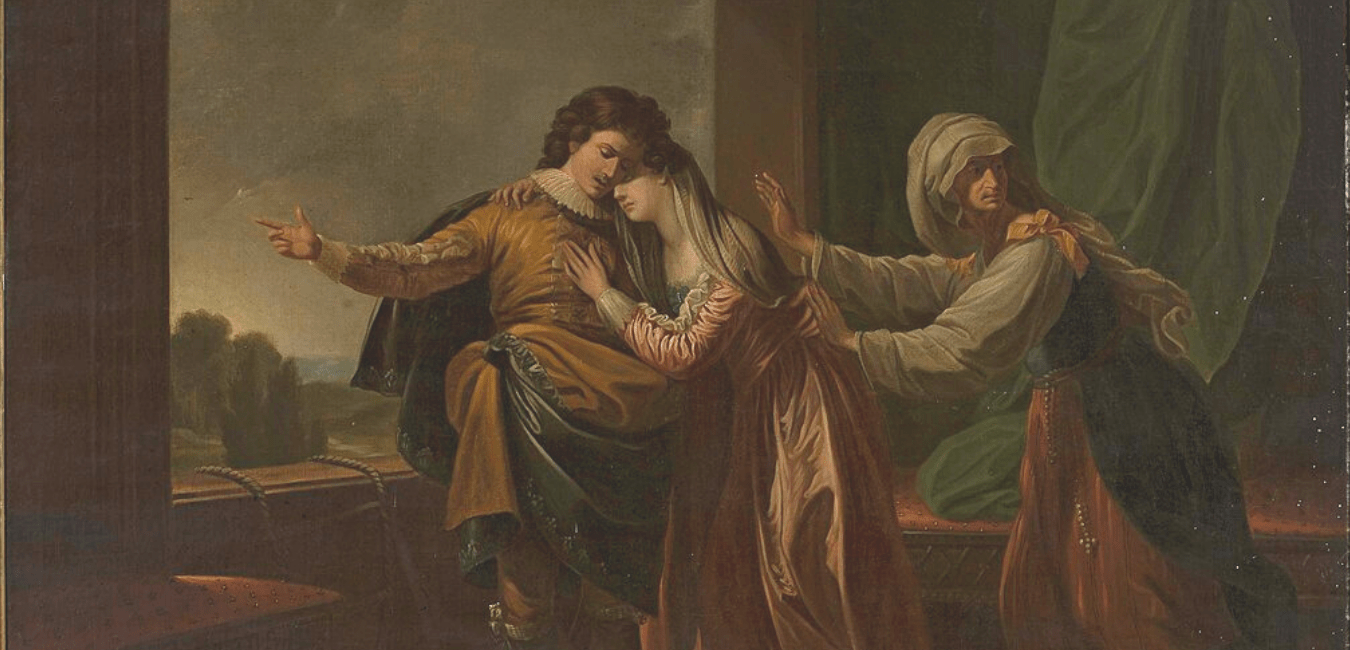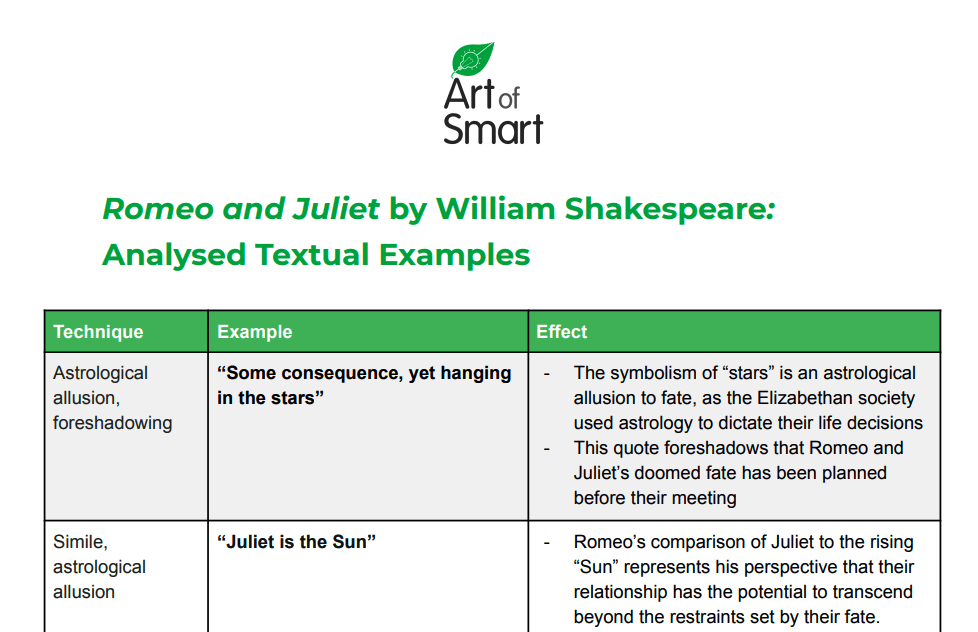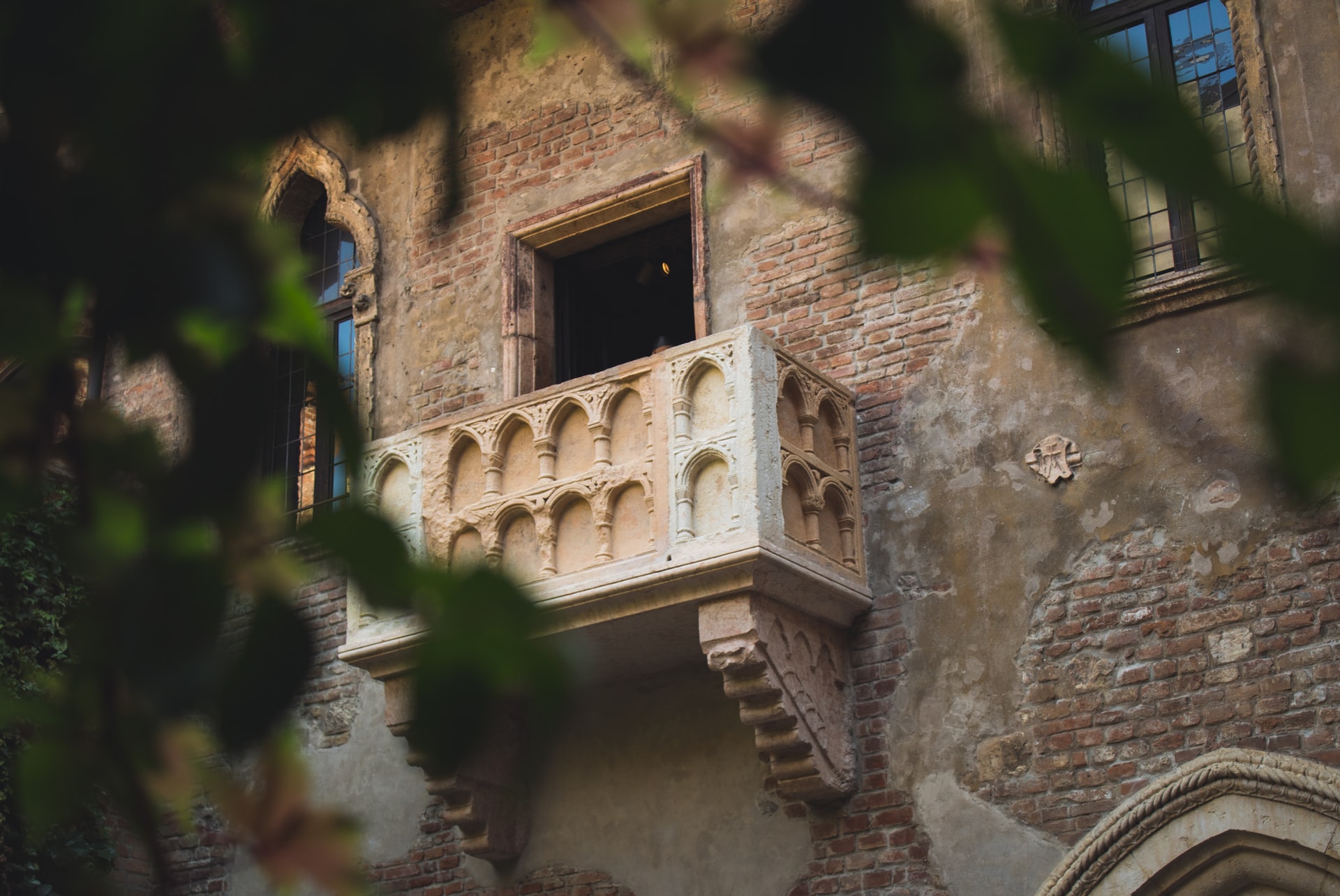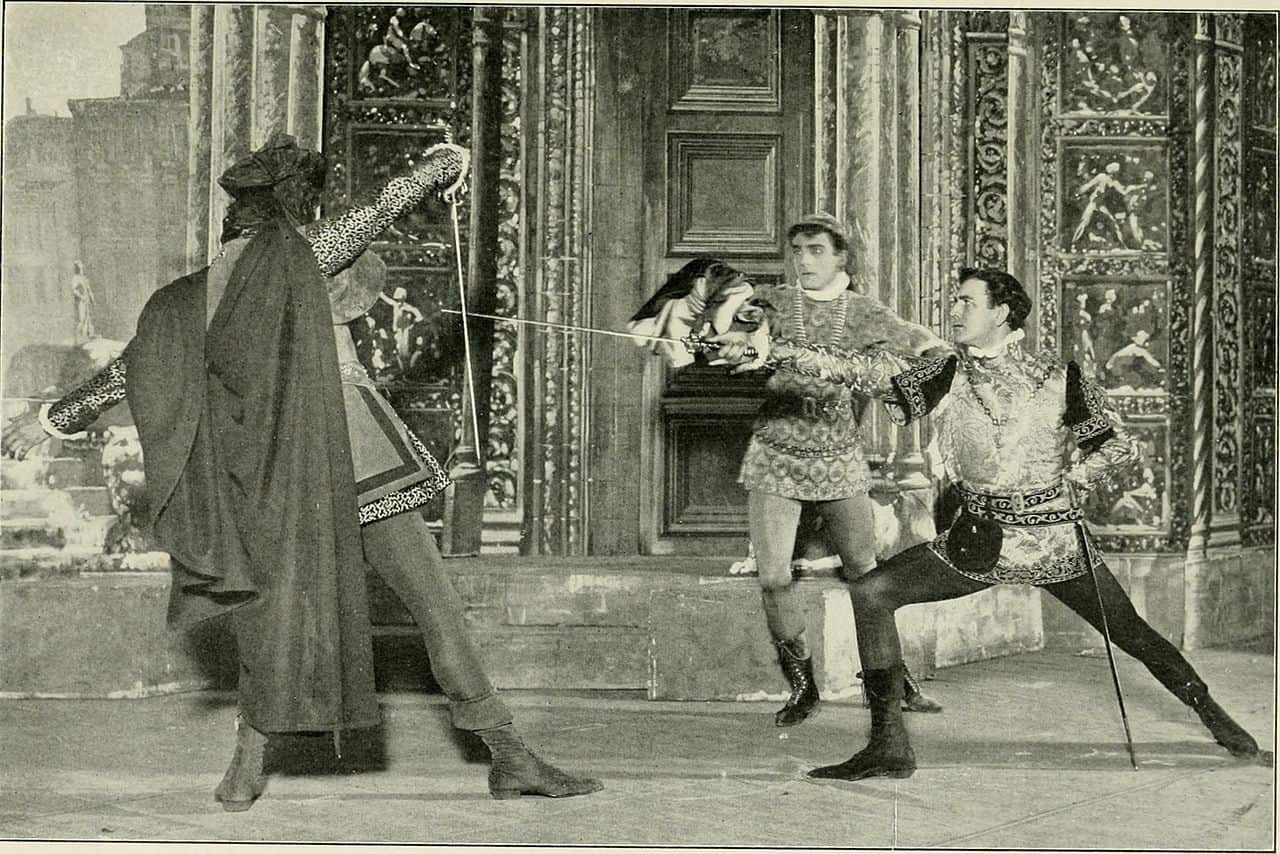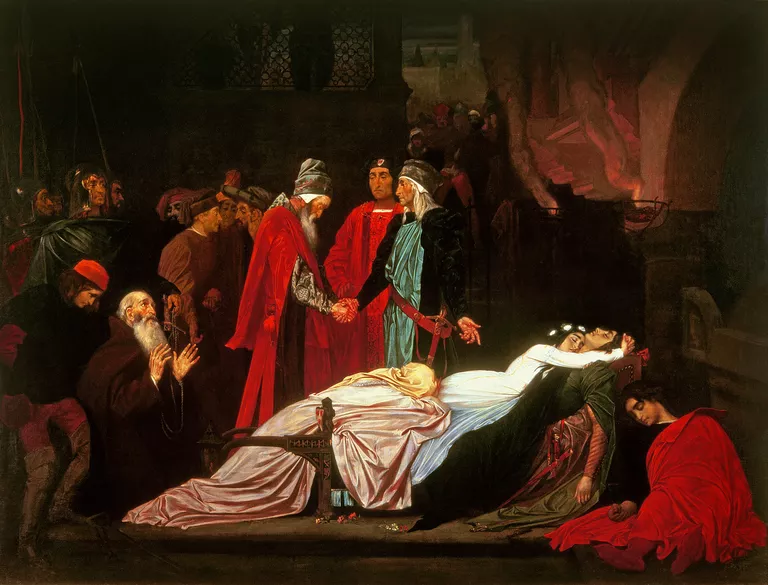Thinking to yourself, “Notes, o notes, wherefore art my notes?” Well, if you’re struggling with your analysis of Romeo and Juliet for English, we’ve got your back with a summary featuring the key characters, context and themes!
On top of that, we’ve got a free example of an analysis table (also known as a TEE table) and a sample paragraph on Romeo and Juliet for you to download!
So, let’s dive into our analysis of Romeo and Juliet!
Romeo and Juliet Summary
Key Characters in Romeo and Juliet
Context
Themes Explored in Romeo and Juliet
Analysis of Romeo and Juliet
Summary of Romeo and Juliet
Romeo and Juliet is a tragic love story by Shakespeare about two lovers who are not meant to be together as they come from feuding families.
To summarise it, Romeo of the Montagues and Juliet of the Capulets were born to be sworn enemies due to the life long conflict between their families. Yet, they embarked in a forbidden love together that led to their deaths, which finally reconciles the two families.
The play is set out in five acts and we’ll dive into more detail on what happens during each of the acts.
Act I
Act I of the play starts with a Chorus who introduces two powerful families in the City of Verona, Italy. These are the Montagues and Capulets, who have been on bad terms with one another for a long time.
The Capulets are holding a party for their daughter, Juliet, to meet Count Paris for an arranged marriage. Meanwhile, Romeo, the son of Montague, disguises himself and crashes the party with his friends in hopes of seeing Rosaline, his previous lover.
Instead, Romeo falls in love at first sight when he meets Juliet and the two become very attracted to each other.
However, Romeo and Juliet soon discover that they come from opposing families and realise their doomed love. At the same time, Tybalt who is Juliet’s cousin, recognises Romeo and drives Romeo and his friends out from the Capulet house.
Act II
In Act II, as Romeo’s friends were leaving the Capulet place, Romeo stays behind to find Juliet. Romeo sees Juliet in her window, and they confess their love for one another and agree to marry the next day.
Romeo runs to Friar Laurence, who agrees to help as he believes Romeo and Juliet’s marriage will end the feud between the Montagues and Capulets. With the help of Juliet’s nurse and Friar Laurence, Romeo and Juliet marry in secret.
Act III
In Act III, Tybalt challenges Romeo to a fight. Romeo declines the fight and remains calm while being disrespected by Tybalt. This angers Romeo’s friend, Mercutio who starts a fight with Tybalt.
Romeo tries to stop the fight, but Mercutio is accidentally killed. Enraged, Romeo chases Tybalt down and kills him.
The Prince of Verona banishes Romeo for his crimes. Before Romeo leaves for Mantua, Friar Laurence helps Romeo and Juliet stay the night together.
Meanwhile, Lord Capulet arranges for Paris and Juliet to wed the next day. Juliet is upset because she does not want to marry Paris, and this angers her parents as they do not know about Juliet’s secret affair with Romeo.
Act IV
In Act IV, Juliet asks Friar Lawrence for help and he gives her a sleeping potion that will make her appear dead. The next morning, the Capulet family finds Juliet in her bed and believes that she had died.
Friar Laurence sends a messenger to inform Romeo about Juliet’s plan and instructs Romeo to collect a sleeping Juliet from the Capulet house.
Act V
Act V is the most intense part of the story as the very important message did not reach Romeo in time due to the plague that delayed the messenger’s journey.
Instead, Romeo hears the news of Juliet’s death and buys himself poison. Romeo goes to Juliet’s tomb in the Capulet’s house, kills a grieving Paris, drinks the poison and dies before Juliet wakes up.
Friar Laurence enters but is too late. He tells Juliet what had happened and Juliet stabs herself from heartbreak.
Friar Laurence, the Prince, the Capulets and the Montague father come together and agree to make peace following the children’s death.
Romeo and Juliet Characters
In case you’ve missed anything, here is a list of the key characters in Romeo and Juliet who are pivotal to the plot.
Romeo Montague
Romeo is the handsome son of the head of Montagues and is 16 years old. He is sensitive, though he can become quite impulsive when his emotions get the better of him.
Unlike his friends, Romeo is not interested in violence but passionate about love. At the beginning of the play, Romeo was madly in love with Rosaline before falling in love with Juliet.
Furthermore, Romeo shares his love for his own friends and family too, including Mercutio and Friar Laurence.
Juliet Capulet
Juliet is the beautiful 13 year old daughter of the Capulet family. Juliet starts off as a naive girl who knows little about love but soon gains the courage to go against her father’s wishes to marry Romeo in secret instead of marrying Paris like her father wanted.
She’s loyal and trusts Romeo wholeheartedly, choosing to support Romeo despite him killing off her cousin, Tybalt.
Friar Laurence
Friar Laurence is a Franciscan friar who helps Romeo and Juliet. He is a nice man who is also skilled in herbs and potion making.
He always has a plan to help Romeo and Juliet in hopes that their relationship will calm the tension between two families and bring peace.
Mercutio
Mercutio is Romeo’s best friend and he is quite the character. He is loud, opinionated, and charismatic with a bombastic attitude that’s flowing in wit and sarcasm.
He also has quite a hot temper. Unlike Romeo, Mercutio is highly hedonistic as he tries to convince Romeo to see love as a sexual pursuit.
Tybalt
Tybalt is Juliet’s cousin from her mother’s side. He is often protective over his family and he acts aggressive and violent whenever he feels offended.
He absolutely hates the Montagues.
Context of Romeo and Juliet
Shakespeare had written Romeo and Juliet based on the true love story from the 3rd century about two Italian lovers who come from the families Cappelletti and Montecchi. The play was written during the Renaissance period where there were great changes in religion, politics, science and the arts.
Religion
When the play was written, Europe had just undergone ‘The Reformation’, where it transitioned from being a traditional Catholic nation to a Protestant society. When Europe was a Catholic society, mortal sin such as bigamy (where you marry someone else while being married to one person) was punished severely.
However, as it progressed into a Protestant nation that broke free from the strict rules of Catholicism, society gained more freedom and less oppression. As people exercised more freedom, they explored notions of humanism which is a Renaissance concept of individual power over their own lives.
Fate and Destiny
Even so, the Elizabethan people still highly believed that their lives were tied to fate and destiny. If you think astrology is popular now, it was actually all the hype during the Elizabethan era!
Elizabethans would plan their whole lives based on astrology readings, including their love lives, travels and more depending on whether the stars favoured them.
As such, Elizabethans valued providentialism, the belief that they have no power in changing their fate as everything in their lives is already ‘predestined’ for them.
Family Values
Family values were also kept quite traditional, as the Elizabethan society remained patriarchal. This means that the father was always the head of the household while the women were left with no rights, properties or legal authority, though they can influence their husbands’ decisions.
Children were also used as property and often engaged in arranged marriages as part of a political or financial deal to gain wealth.
Romeo and Juliet may seem too young to be married but in the Elizabethan years, it was considered normal for people to marry young.
Love
As such, love was perceived to be a dream for Elizabethans who often enter into arranged marriages. It is often restrained with little contact between “lovers”, and the only expressions of love come in gifts, letters and poems.
This is perhaps why the Elizabethan audience were so enticed by Romeo and Juliet’s passionate love for one another, as this was rarely seen in their society.
Appreciation for Theatre
That being said, plays were highly popular in the Elizabethan theatres. Here is where the rich and poor gather in rowdy crowds to watch plays.
Poorer people stood near the stages while richer people watched from stands above. As such, Shakespearean plays became really popular in this era, as there was a great appreciation for the arts across all groups from all backgrounds.
Romeo and Juliet Themes
Here are three key themes from Romeo and Juliet. Feel free to look to these for inspiration when you’re planning to write your thesis and topic sentences in your essay.
Fate VS Free Will
Shakespeare lived in a transition period where people were starting to gain their own freedom to live their lives, yet were still tied to the notions of fate and destiny. You can see this with his characters, Romeo and Juliet, who try to exercise their free will by choosing to be with one another despite their opposing family history.
Yet, it is Romeo and Juliet’s own actions and decisions that ultimately led to their doomed fate. This reinforces the Elizabethan belief that fate and destiny govern our lives, even when we try to control it ourselves.
Some key quotes that explore this idea include:
| Quote | Link to Fate VS Free Will |
|---|---|
| “A pair of star crossed lovers take their life” | The term “star-crossed lovers” is used to show that Romeo and Juliet’s relationship is controlled by fate, symbolised as a “star”. |
| “Some consequence, yet hanging in the stars” | This line from Romeo reveals that he foresees his tragic fate that has been planned from the start, even before he meets Juliet. |
| “Then I defy you, stars!” | This line from Romeo shows his attempt to use his free will to overcome his fate. |
Love VS Conflict
It would be nice to say that “love conquers all” in Shakespeare’s Romeo and Juliet, but it’s not as simple as that.
Love and conflict coexist within this text. The love between Romeo and Juliet is seen as a sign of hope to bring peace to the ongoing feud between the Montagues and Capulets.
However, the conflict between families grew so violent that it had caused the deaths of their beloved children and the love between them. Ultimately, Shakespeare shows us that love affects conflict, and conflict affects love.
Here are some quotes that allow you to explore this a bit deeper:
| Quote | Link to Love VS Conflict |
|---|---|
| “Here’s much to do with hate, but more with love” | This line from Romeo reveals that his love is as passionate as the hatred the families have for each other. |
| “My only love sprung from my only hate” | Juliet realises that the Romeo she loves is ironically from the family that she is supposed to hate. |
| “Haply some poison yet doth hang on them To make me die with a restorative” | This line from Juliet reveals that the conflict between the two families have caused her and Romeo to suffer so much, that it made her see death as being “restorative”. |
The Freedom of Youth Rebellion
Have you ever wanted to do whatever you felt like, without your parents butting in?
If that’s a yes from you, you’ll probably be able to relate to Romeo and Juliet. These two are also young teenagers who rebel against their parents’ wishes and express their individuality through their love for one another.
However, an excess of youthful spirit can also lead to dire consequences, as Romeo and Juliet’s unbridled passion for one another led to their unfortunate end.
Here are some key quotes that relate to this theme:
| Quote | Link to the Freedom of Youth Rebellion |
|---|---|
| “Here’s much to do with hate, but more with love” | This line from Romeo reveals that he values love unlike his friends and family who harbour hate for the other family. |
| “With love’s light wings did I o’erperched these walls, For stony limits cannot hold love out” | Romeo explains that his love for Juliet gives him “light wings” to climb over “stony limits” that may be set by their parents’ strife. |
| “My bounty is as boundless as the sea” | Juliet describes her love for Romeo as “boundless as the sea”, reiterating the notion that their youthful love surpasses all limitations and sets her free. |
If none of these themes resonate with you, here are some other ideas that you may find interesting:
- External conflict VS internal conflict
- The conflict between independence VS family obligation
- The consequences of unbridled emotions
How to Analyse Romeo and Juliet in 3 Steps
Students often jump right into answering the question when writing their thesis for their essays. Many don’t realise that it is only after you’ve analysed your text that you can write an amazing thesis that not only answers the question, but proves that you really do know the text inside out.
Let’s go through the three simple steps you can take to analyse Romeo and Juliet and ace that essay!
Step 1: Select your example(s)
You may be thinking to yourself, “There’s lots happening in Romeo and Juliet so where do I even start?”
A great place to start is to look for an example with a technique. This technique can offer a deeper insight into the text, which will help you form an in-depth analysis.
Here are two quotes we have selected to focus on the theme of fate VS free will:
“It is the east, and Juliet is the sun”
and
“I defy you, stars!”
Step 2: Identify your technique(s)
Students often fall into the trap of listing every technique they can find or using highly complicated techniques in hopes of getting a good mark. This is not true!
It is better to find a technique which allows you to talk about your theme in more depth and build your argument throughout your essay.
Techniques that provide a deeper understanding of the text include symbols, metaphors, recurring motifs, allegories, connotations and similes. Try to avoid using surface level techniques such as alliteration or repetition.
The three techniques found in the quotes above include simile, symbolism and allusion to astrology.
If you can, try to find a few techniques within one quote to help you kill two birds with one stone!
Step 3: Write the analysis
When you’re writing an analysis, try not to list out every technique you can find in the quote. It is very important to explain what the effect of the technique is and how that relates to your argument.
An example of listing out techniques looks like this:
Simile is used as Romeo refers to Juliet as the metaphorical “Sun” and uses the symbolism of astrology as he “def(ies) you, stars” to allude to fate versus free will.
To avoid this, we need to go into how each of these techniques support our argument.
First of all, the simile of Juliet being like the “Sun” reveals Romeo’s love for Juliet that transcends beyond their families’ feud. The symbol of the “Sun” is also important to emphasise the fated doom between the two star crossed lovers.
The allusion to astrology in “I defy you, stars!” shows how fate governs Romeo and Juliet’s relationship. Once we put these techniques together, our analysis will look like:
Shakespeare’s simile in Romeo’s description of Juliet as the “Sun” reveals their perception that their love can transcend beyond the boundaries of their families’ strife. Yet, the symbolism of the “Sun” reminds the audience that Romeo and Juliet still remain as “star crossed lovers” who are destined to die despite their efforts to overcome their fated doom. As Romeo proclaims “I defy you, stars” before submitting to his fate, the astrological allusion reinforces how destiny continues to govern their lives, reinstating the Elizabethan belief that fate will always overpower free will.
You’ve made it to the end! Find another sample analysis paragraph of Romeo and Juliet here!
Need some help with your essay analysis of other texts aside from Romeo and Juliet?
Check out other texts we’ve created guides for below:
- Lord of the Flies
- 1984
- Jane Eyre
- Photograph 51
- In Cold Blood
- The Meursault Investigation
- Persepolis
- To Kill a Mockingbird
- The Book Thief
- Away by Michael Gow
- Blade Runner
- Fahrenheit 451
We’ve also got a bunch of articles specifically on plays by Shakespeare which you can have a read through below:
- Macbeth
- A Midsummer Night’s Dream
- Othello
- Hamlet
- The Merchant of Venice
- Much Ado About Nothing
- King Richard III
- King Lear
- The Tempest
Are you looking for some extra help with your analysis of Romeo and Juliet?
We have an incredible team of tutors and mentors!
We can help you master your analysis of Romeo and Juliet by taking you through the summary, context, key characters and themes. We’ll also help you ace your upcoming English assessments with personalised lessons conducted one-on-one in your home or online!
We’ve supported over 8,000 students over the last 11 years, and on average our students score mark improvements of over 20%!
To find out more and get started with an inspirational tutor and mentor, get in touch today or give us a ring on 1300 267 888!
Kate Lynn Law graduated in 2017 with an all rounders HSC award and an ATAR of 97.65. Passionate about mentoring, she enjoys working with high school students to improve their academic, work and life skills in preparation for the HSC and what comes next. An avid blogger, Kate had administered a creative writing page for over 2000 people since 2013, writing to an international audience since her early teenage years.

